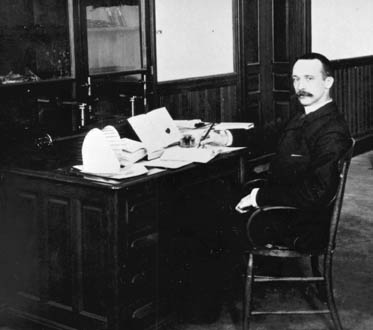Society History
The American Physical Society was founded on May 20, 1899, when 36 physicists gathered at Columbia University for that purpose. They proclaimed the mission of the new Society to be "to advance and diffuse the knowledge of physics", and in one way or another the APS has been at that task ever since.
Early Years: Journals Added to Meetings
In the early years, virtually the sole activity of the APS was to hold scientific meetings, initially four per year. In 1913, the APS took over the operation of the Physical Review, which had been founded in 1893 at Cornell, and journal publication became its second major activity.
Physical Review was followed by Reviews of Modern Physics in 1929, and by Physical Review Letters in 1958. Over the years, Physical Review has subdivided into five separate sections as the fields of physics have proliferated and the number of submissions grew.
Recent Years: Expanding Scientific Service through Programs
In more recent years, the activities of the Society have broadened considerably. Stimulated by the increase in Federal funding in the period after the second World War, and even more by the increased public involvement of scientists in the nineteen sixties, APS is active in public and governmental affairs, and in the international physics community.
In addition, the Society conducts extensive programs in education, public outreach, and media relations. APS divisions and topical groups cover all areas of physics research. Forums reflect the interest of its over 54,000 members in broader issues, and sections are organized by geographical region.
Father of APS
 Photo Credit: Clark University Archives
Photo Credit: Clark University Archives
Arthur Webster, Professor of physics at Clark University, organized the first APS meeting at Fayerweather Hall, Columbia University.
